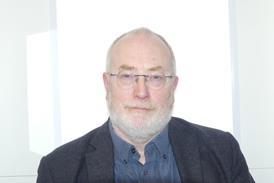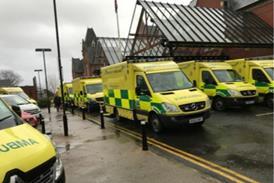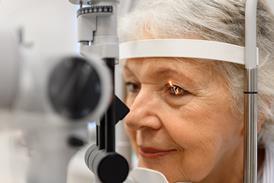The 2.6 per cent health spending increase was not quite part of the Treasury’s plan in 2013-14. The accounts show that transformative change is proving difficult but if the NHS can come up with preventative solutions it can improve affordability, says Anita Charlesworth
The raft of accounts published from across NHS England show that 2013-14 was a decisive year for the health service. Not only was it the first year of operation for the post-reform commissioning system, but it was also the year in which NHS spending started to grow quite rapidly.
Back in 2010 the government committed to protect the NHS from public spending cuts. Health spending was to grow at just above the rate of inflation.
‘The Treasury must be looking back wistfully on these debates’
Between 2010 and 2012 there was much political argument about whether the government was fulfilling its commitment. Sir Andrew Dilnot, chair of the UK Statistics Authority, wrote to the government at the end of 2012 concluding that spending on the NHS in real terms was in fact lower in 2011-12 than it was in 2009-10.
How times change. The Treasury must be looking back wistfully on these debates.
- Health spending sees sharpest rise in current parliament
- Hunt dismisses Keogh trusts’ finance struggles
- Commissioning system belatedly balances £97bn budget
- Agency costs jump £300m at foundation trusts
The downward pressure

The accounts show that in 2013-14 health spending increased by 2.6 per cent in real terms, up from a 1.2 per cent increase in 2012-13.
Not quite a return to the historic average of 4 per cent a year over and above inflation, but when you factor in the downward pressure on pay from the government’s award cap it doesn’t look so different.
‘Increased health spending has been achieved by a rapid reduction in the overall health underspend’
Increasing health spending by 2.6 per cent was almost certainly not part of the Treasury’s plan for 2013-14.
It has been achieved by a rapid reduction in the overall health underspend.
Landing on a pin head
The Department of Health has landed its budget on a pin head with a £246m underspend on the total budget - resource and capital excluding depreciation costs. This is a big change from last year when the DH’s underspend was more than £2.1bn.
2013-14 is the year that trusts and foundation trusts’ deficits deepened and spread with 65 ending the year in deficit.
The overall combined deficits of NHS providers exceeded the combined surpluses by £108m. Below the headline numbers it is clear the reasons for the increased spending in 2013-14 reflect ongoing pressures which, if anything, will grow in the run up to the election.
‘It is difficult to see how the NHS can end 2014-15 without another significant increase in the pay bill’
Moreover, having landed less than 0.2 per cent of the health budget this year the DH has no room to manoeuvre.
The big issue for this year was increased staff costs as hospitals responded to the Francis report by recruiting more doctors, nurses and other frontline staff - overall, the accounts report that NHS providers workforce grew by 34,000 whole time equivalents in 2013-14.
Many of these staff were recruited from autumn onwards and so NHS budgets have not felt the full year cost impact of the additional workforce.
More positively some of this additional employment may help to wean the NHS off a burgeoning agency and temporary staff bill which is bad for efficiency and quality. But while the focus to date has been on acute providers, nursing standards apply beyond acute providers, and we can expect a further wave of recruitment as mental health and community groups review their frontline staffing levels and skill mix.
Overall, it is difficult to see how the NHS can end 2014-15 without another significant increase in the pay bill.
On the cliff’s edge
The other clearly observable trend is continued difficulty delivering the transformative change, which has been talked about since the quality, innovation, productivity and prevention programme and the Nicholson Challenge were first discussed some five years ago.
The NHS planning guidance shows that across the NHS around a third of the affordability challenge each year is supposed to be bridged by “system efficiencies” rather than improving the efficiency of providers.
In 2013-14 whatever efficiencies were delivered did not stem the pressure for more inpatient, outpatient or accident and emergency care.
‘Without delivering system efficiencies the only option is to slash hospital costs which is looking less feasible’
While the NHS is doing more, the strains on some of the key access targets are showing most noticeably with the four hour A&E waiting times target having been breached for major A&E departments over the last year.
Almost one in seven cancer patients waited more than 62 days from an urgent GP referral to first definitive treatment for cancer during the last three months of 2013-14. If these patterns continue, deficits are likely to rapidly spread from NHS providers to commissioners.
In 2013-14 the NHS stood at the cliff edge and with the help of skilful financial management, only just managed to avoid plummeting to the ground to live within the budget.
However skilful the finance managers are this year, it is unlikely that they can repeat the feat.
People often remark that all too often we spend money on the ambulance waiting at the bottom of the cliffs, not at the fence at the top.
The challenge for the NHS is that to avoid the ambulance, the service needs to really deliver on the system efficiencies that have proved so elusive. Without this the only option is to slash hospital costs and post-Francis this is looking less and less feasible.
Anita Charlesworth is chief economist of the Health Foundation



























1 Readers' comment